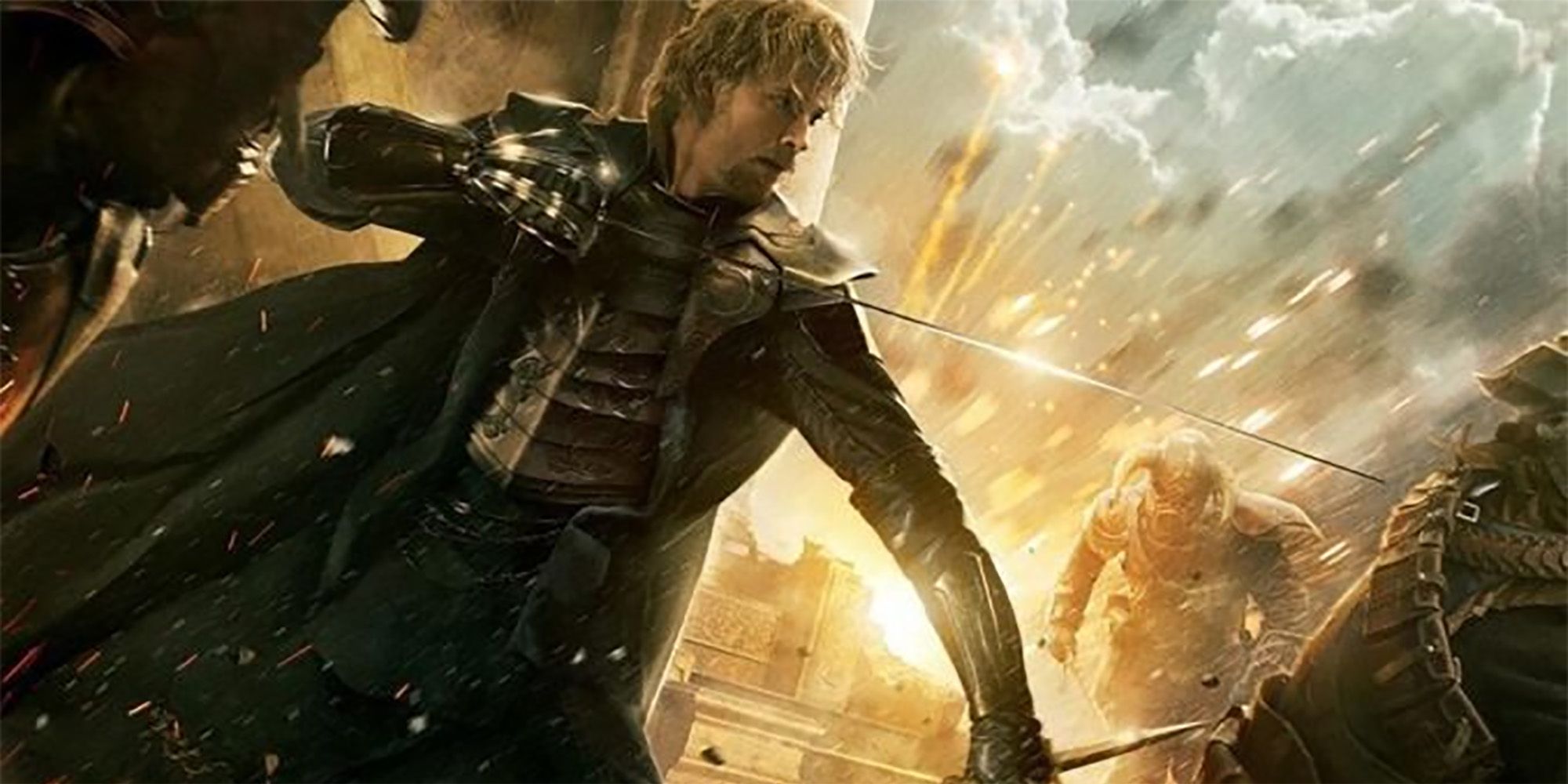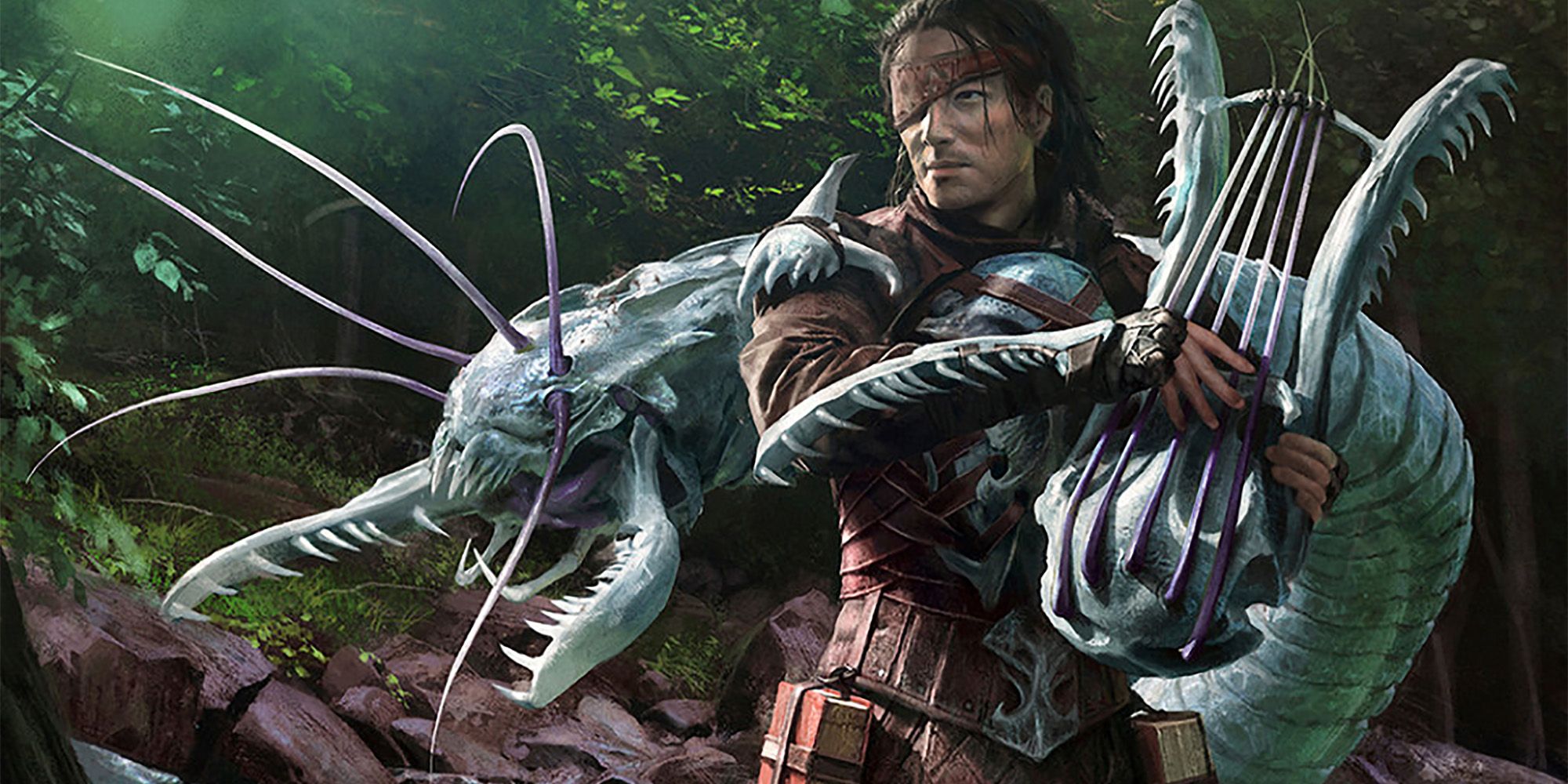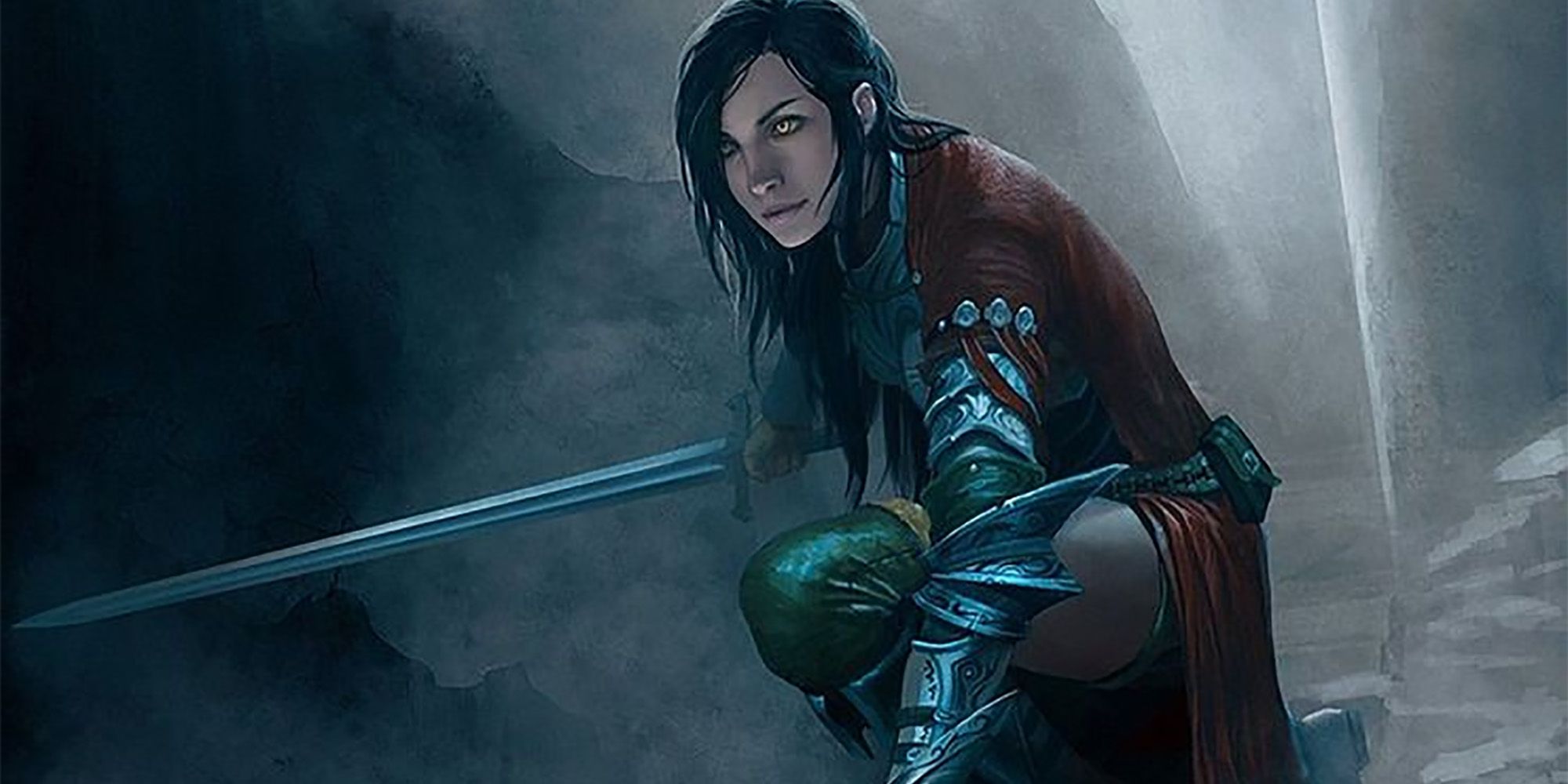It's hard to argue that swashbuckling Bards aren't the coolest kind of Dungeons & Dragons character. Clerics may make better casters and Paladins are stronger warriors, but there's something irresistibly stylish about a hero who can kill with wit, weapons and wizardry. Unfortunately, given how powerful magic is in D&D, it's often more efficient for Bards to focus on the latter instead of mixing swords and sorcery.
However, while building a viable combat Bard is tricky, it's not impossible. The Bard is one of the most flexible classes in the game and, with a bit of creativity and forethought, it's entirely possible to make a decent warrior out of one. It's not the easiest project for newcomers, since it does require a deep knowledge of how Bards work to maximize their efficiency on the battlefield, but players who are up for the challenge will find the results are worth it.
The Basics of Building a Battle Bard
Before building a melee Bard, think about the party's composition. The character might struggle to stand out next to more specialized Paladins or Barbarians, so they may be better off in smaller or magic-heavy teams where they can fill in a gap by taking on a fighting role. If the campaign is starting at level one, that will provide a few sessions to see how everyone plays together and how this character can contribute to the group's success. Generally speaking, any Bard will need to invest points in Charisma, Dexterity and Constitution, as this will allow them to cast, fight and take hits.
Playing a good combat Bard also requires making the most of the class' spell list. Bard magic doesn't excel at destruction or restoration, and their subclasses don't get expanded lists like Clerics or Sorcerers. Therefore, those who want to play more traditional frontline combatants with magic are better off as Bladesinger Wizards or Hexblade Warlock. Instead, melee Bards are best utilized as tricksters, misleading foes with illusions and diversions before striking while they're vulnerable.
This means a melee Bard will need spells that maximize their own combat prowess and support their friends. Faerie Fire can give everyone advantage on attack rolls, and the newly-released Silvery Barbs is a great way to make foes waste their actions. At higher levels, they can learn spells like Invisibility to get the drop on enemies, or Slow to debuff their AC and Dexterity saves. In situations where the party is overwhelmed, try using Fear or Dissonant Whispers to send opponents running.
The Bardic Colleges of Swords and Valor Are Ideal
Bards pick their subclass at level three, and while Fifth Edition offers eight Bardic College options with their own merits, only two are worth considering for a melee Bard. The Colleges of Swords and Valor are the most obvious options, and both of them play rather differently. Swords Bards are glass cannons, dedicated warriors with fighting styles who use Blade Flourishes to hit harder and move faster. Valor Bards are more balanced, lacking a fighting style but gaining more proficiencies and using Combat Inspiration to better buff their allies.
Since they aren't proficient with shields, Swords Bards should take spells like Mirror Image or Blade Ward to compensate for their inferior defenses. Consider feats and Magical Secrets that complement the subclass's more aggressive nature. Fey Touched provides Misty Step, letting the Bard get in and out of battle with a bonus action, while Holy Weapon or a Smite could greatly improve the characters damage output. Taking Resilient in Constitution will also make it easier to concentrate on such spells.
By contrast, the Valor Bard's wider array of proficiencies provide more flexibility, and Battle Magic lets them attack with whatever they're wielding after casting a Bard Spell. This means the Bard could take something like Destructive Wave as a Magical Secret, then stab foes with a rapier after knocking them prone. War Caster would be a fantastic feat for this kind of character. Alternatively, since Battle Magic doesn't require a melee weapon, the Bard could take Fireball or Disintegrate as a Secret and pick off any stragglers with a longbow.
Multiclassing Can Bring Out the Best In a Melee Bard
Superior Inspiration isn't the best capstone feature for a martial Bard, so dipping into another class could be a better option. Starting with two levels in Fighter would let the character be a full caster with heavy armor, a fighting style, proficiency in Constitution saves and Action Surge. This could make for an incredibly tanky Valor Bard who supports their allies while being nigh-indestructible. For this route, swap Dexterity for Strength so the character can wear plate armor and swing heavier weapons.
Alternatively, Swords Bards should consider dipping into Hexblade Warlock. Not only will its extra proficiencies patch up the subclass' lower durability, but Hex Warrior lets you use Charisma for attacks and spellcasting. Taking a second level grants Devil's Sight and the awesome "Hex + Agonizing Blast" combo. Combined with the Swords Bard's greater mobility from Flourishes, this makes for a character who's deadly at any range at surprisingly little cost.
Overall, though, it's important to stay adaptable. The Bard class' versatility is exactly what makes it so good in the first place, so keep an eye on how the party performs and consider taking on skills and spells that address any weak points. A melee Bard probably won't match a Fighter or Paladin for raw damage but, as the old saying goes, the jack of all trades and master of none is often more useful than a master of one.




